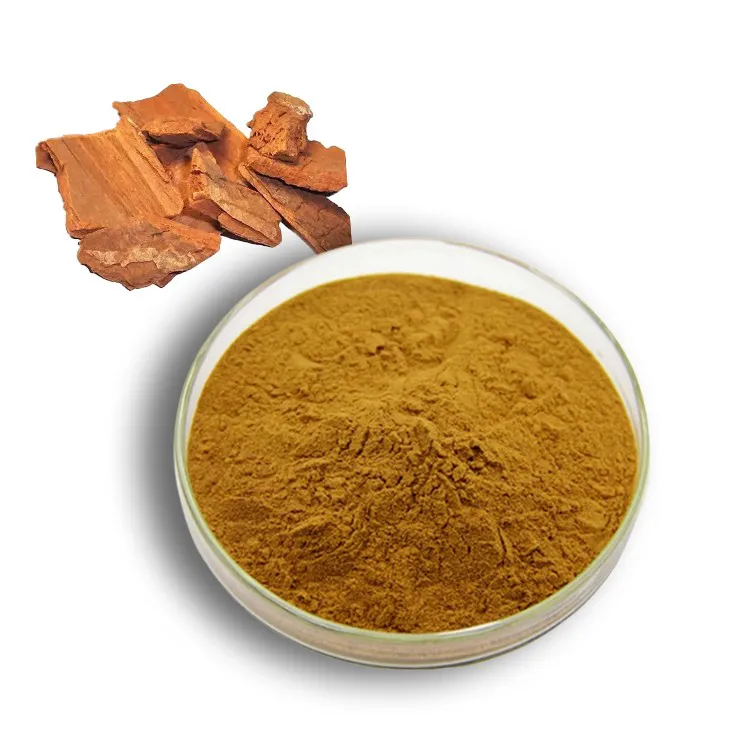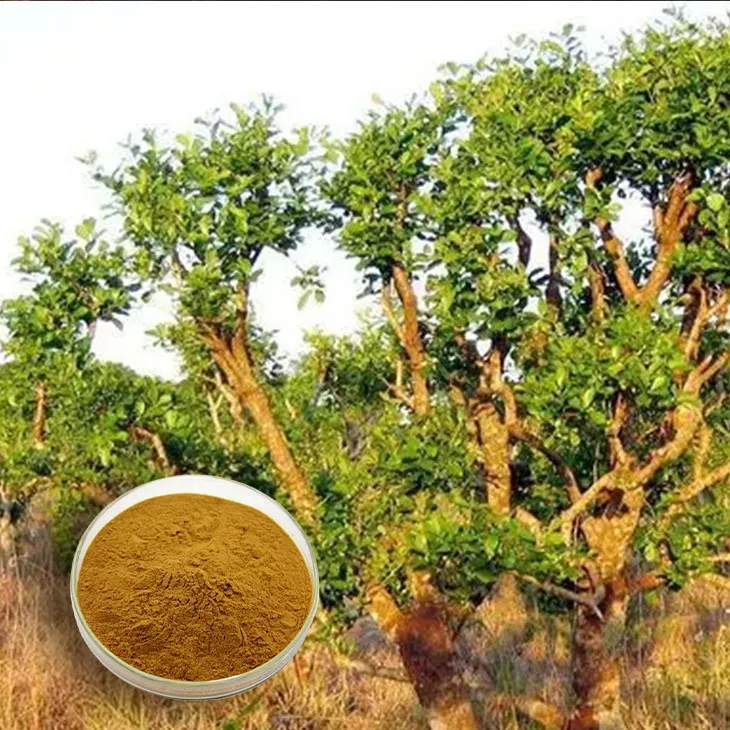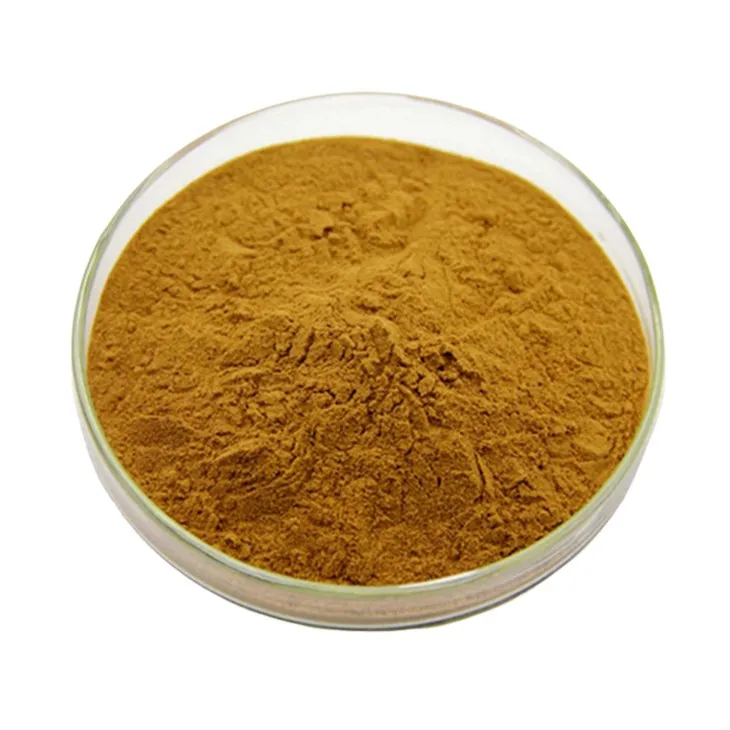- 0086-571-85302990
- sales@greenskybio.com
Extraction technology and production process of yohimbine bark extract.
2024-11-28

1. Introduction
Yohimbine Bark Extract has emerged as a topic of great interest due to its potential applications in various fields. This extract is obtained from barks that contain yohimbine, a natural alkaloid. Understanding the extraction technology and production process is crucial for ensuring the quality and effectiveness of the final product.

2. Yohimbine - Containing Barks and Their Geographical Distribution
Yohimbine is primarily found in the bark of certain trees. One of the main sources is the Pausinystalia johimbe tree, which is native to Central and Western Africa. The tree thrives in tropical rainforest regions with specific climatic conditions. Other related species may also contain yohimbine, but Pausinystalia johimbe is the most well - known source.
These trees are mainly distributed in countries such as Cameroon, Gabon, and Congo. The geographical location plays a significant role in the quality of the bark and, consequently, the yohimbine content. Barks from different regions may have variations in yohimbine concentration due to differences in soil composition, climate, and growth conditions.

3. Extraction Techniques
3.1 Solvent Extraction Methods
Solvent extraction is a commonly used method for obtaining Yohimbine Bark Extract. The choice of solvent is a critical factor that can significantly influence the quality of the extract.
- Alcohol - based solvents: Ethanol is a popular choice. It has the ability to dissolve yohimbine effectively while being relatively safe and easy to handle. Ethanol can extract a wide range of compounds from the bark, including yohimbine alkaloids. The concentration of ethanol can also affect the extraction efficiency. Higher concentrations may lead to more efficient extraction, but they may also extract unwanted impurities.
- Hydrocarbon solvents: For example, hexane can be used in some extraction processes. However, hydrocarbon solvents are more flammable and require careful handling. They are often used in combination with other solvents or in a multi - step extraction process. The advantage of hydrocarbon solvents is that they can selectively extract certain compounds, which can be useful for purifying the yohimbine extract.
The extraction process using solvents typically involves soaking the dried and ground bark in the solvent for a certain period. The mixture is then stirred or agitated to enhance the mass transfer between the bark and the solvent. After that, the solvent containing the dissolved yohimbine is separated from the solid residue, usually by filtration or centrifugation.
3.2 Enzymatic Extraction
Enzymatic extraction is an emerging method in the extraction of Yohimbine Bark Extract. Enzymes can be used to break down the cell walls of the bark, making it easier to extract the yohimbine.
- Types of enzymes: Cellulases and hemicellulases are often used. These enzymes target the polysaccharides in the cell walls of the bark. By hydrolyzing these polysaccharides, they create pores and openings in the cell walls, allowing the yohimbine to be more easily released into the extraction medium.
- Advantages: Enzymatic extraction is generally considered a more environmentally friendly method compared to some solvent extraction methods. It can also be more selective, potentially leading to a higher - quality extract with fewer impurities. Additionally, enzymatic extraction can be carried out under milder conditions, which may help preserve the integrity of the yohimbine molecule.
However, enzymatic extraction also has some challenges. The cost of enzymes can be relatively high, and the optimization of the enzymatic reaction conditions, such as temperature, pH, and enzyme concentration, requires careful study.

4. Production Processes
4.1 Drying the Barks
The first step in the production process is drying the barks. This is an important step as it helps to preserve the barks and prevent the growth of microorganisms.
- Sun drying: This is a traditional method. The barks are spread out in the sun and allowed to dry naturally. However, sun drying may be affected by weather conditions and may not be very consistent in terms of drying quality.
- Oven drying: Using an oven allows for more controlled drying. The temperature and humidity can be adjusted to ensure proper drying. Typically, a low - to - medium temperature is used to avoid over - drying or damaging the barks. Drying the barks reduces their moisture content, which is beneficial for subsequent processing steps such as grinding and extraction.
4.2 Grinding
After drying, the barks are ground into a fine powder. Grinding is necessary to increase the surface area of the barks, which in turn enhances the extraction efficiency.
- Mechanical grinding: This can be done using a grinder or a mill. The particle size of the ground bark can be adjusted depending on the requirements of the extraction process. Finer particles generally lead to better extraction results as they provide more contact area with the extraction solvent or enzyme.
- Safety precautions: During grinding, safety measures should be taken to prevent dust inhalation. Workers should wear appropriate protective equipment such as masks and goggles.
4.3 Subsequent Extraction Procedures
Once the barks are dried and ground, the extraction process can be carried out.
- Batch extraction: In this method, a certain amount of the ground bark is placed in a container with the extraction solvent or enzyme solution. The mixture is then stirred or agitated for a specific period. After extraction, the extract is separated from the solid residue.
- Continuous extraction: This is a more advanced method, usually used in larger - scale production. The ground bark and the extraction medium are continuously fed into an extraction apparatus. The extract is continuously removed while the solid residue is discharged at the end of the process. Continuous extraction offers higher efficiency and better control over the extraction process.

5. Quality Assurance in Production
5.1 Standardization
Standardization is crucial in the production of yohimbine bark extract. It ensures that the final product has a consistent quality and potency.
- Yohimbine content determination: Analytical methods such as high - performance liquid chromatography (HPLC) are used to measure the yohimbine content in the extract. This helps to ensure that the product meets the specified standards.
- Impurity control: In addition to yohimbine, the extract may contain other compounds. Some of these may be impurities that need to be controlled. Standardization involves setting limits for impurities and ensuring that the extraction and purification processes are effective in reducing their levels.
5.2 Safety Measures
- Worker safety: Workers involved in the production process should be provided with proper training on handling solvents, enzymes, and other chemicals. They should also be equipped with appropriate safety gear such as gloves, masks, and goggles. In case of any spills or accidents, there should be established emergency procedures.
- Product safety: The final yohimbine bark extract should be tested for safety. This includes checking for any potential contaminants or toxins. The extract should also be stored in appropriate conditions to maintain its stability and safety. For example, it should be stored in a cool, dry place away from sunlight and incompatible substances.
6. Conclusion
In conclusion, the extraction technology and production process of yohimbine bark extract are complex and require careful consideration. The choice of extraction method, production steps, and quality assurance measures all play important roles in obtaining a high - quality yohimbine bark extract. With the increasing demand for natural products with potential health benefits, further research and development in this area are expected to continue, aiming at improving the efficiency, safety, and quality of yohimbine bark extract production.
FAQ:
What are the main yohimbine - containing barks?
Yohimbine is mainly found in the bark of the Pausinystalia johimbe tree. This tree is native to certain regions in Africa, such as Cameroon and Gabon.
How does solvent choice affect the quality of yohimbine bark extract?
Different solvents can have different affinities for yohimbine and other components in the bark. For example, polar solvents may extract more water - soluble impurities along with yohimbine, while non - polar solvents might be more selective. If the wrong solvent is chosen, it could lead to a lower purity of the extract, potential contamination with unwanted substances, and may also affect the stability and bioactivity of the yohimbine in the extract.
What are the advantages of enzymatic extraction compared to traditional solvent extraction?
Enzymatic extraction can be more specific in targeting the release of yohimbine from the bark. It may operate under milder conditions compared to some solvent extraction methods, which can help preserve the integrity of the yohimbine molecule. Additionally, enzymatic extraction may result in a cleaner extract with fewer by - products and unwanted compounds, as the enzymes can be designed to break down only the relevant cell wall components to release yohimbine.
What are the key steps in the production process of yohimbine bark extract?
The key steps include drying the barks to an appropriate moisture level, which helps in preservation and subsequent processing. Grinding the dried barks into a suitable particle size is important for efficient extraction. Then, the extraction procedures, such as solvent or enzymatic extraction, are carried out. After extraction, there are usually steps for purification, concentration, and finally, quality control to ensure the final product meets the required standards.
How is quality assurance maintained during the production of yohimbine bark extract?
Quality assurance involves standardization through methods like HPLC (High - Performance Liquid Chromatography) to accurately measure the yohimbine content. Safety measures include ensuring the proper handling of solvents to prevent contamination, and following good manufacturing practices (GMP) throughout the production process. Also, strict quality control checks at each stage of production help to maintain the consistency and safety of the yohimbine bark extract.
Related literature
- The Extraction and Analysis of Yohimbine from Yohimbine - containing Barks"
- "Advanced Techniques in Yohimbine Bark Extract Production"
- "Yohimbine: From Bark to Extract - A Comprehensive Review of Production"
- ▶ Hesperidin
- ▶ citrus bioflavonoids
- ▶ plant extract
- ▶ lycopene
- ▶ Diosmin
- ▶ Grape seed extract
- ▶ Sea buckthorn Juice Powder
- ▶ Beetroot powder
- ▶ Hops Extract
- ▶ Artichoke Extract
- ▶ Reishi mushroom extract
- ▶ Astaxanthin
- ▶ Green Tea Extract
- ▶ Curcumin Extract
- ▶ Horse Chestnut Extract
- ▶ Other Problems
- ▶ Boswellia Serrata Extract
- ▶ Resveratrol Extract
- ▶ Marigold Extract
- ▶ Grape Leaf Extract
- ▶ blog3
- ▶ blog4
-
High - quality kidney bean extract products.
2024-11-28
-
The best aged garlic extract on the market.
2024-11-28
-
How to make powder with L - arginine.
2024-11-28
-
Certified organic hawthorn extract.
2024-11-28
-
Bulk purchase of mulberry leaf extract.
2024-11-28
-
Wholesale Suppliers of Eyebright Extract.
2024-11-28
-
Hops Extract
2024-11-28
-
Saw Palmetto Extract
2024-11-28
-
Aguaje Extract
2024-11-28
-
Kelp Extract Powder
2024-11-28
-
Sophora Flavescens Root Extract
2024-11-28
-
Peppermint Oil
2024-11-28
-
Bitter Melon Extract
2024-11-28
-
White mustard seed extract
2024-11-28
-
Tongkat Ali Extract
2024-11-28
-
Garcinia Cambogia Extract
2024-11-28





















